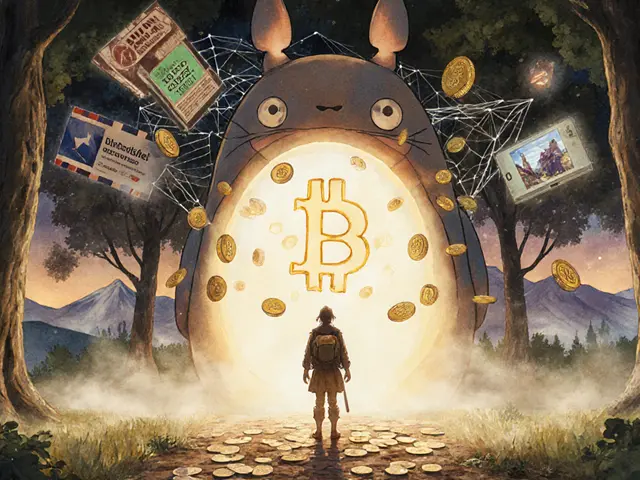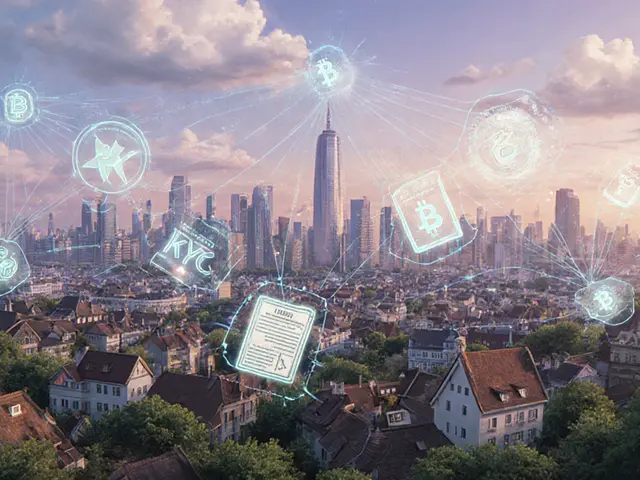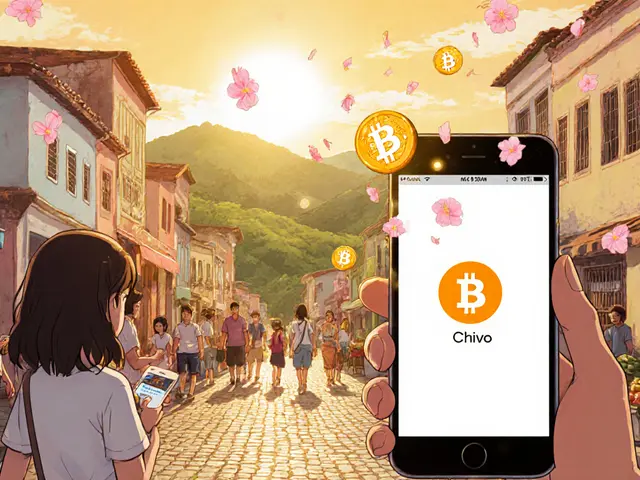Cryptocurrency Transaction Fee Calculator
Estimated Transaction Fee
Fee Comparison Across Blockchains
When you send crypto, you usually see a tiny extra amount taken from your wallet. That extra payment is called a cryptocurrency transaction fees. It’s not a random tax - it’s the price you pay to keep the network running, secure, and fast. This guide breaks down what those fees are, why they differ across blockchains, and what you can do to keep them low.
Quick Takeaways
- Transaction fees reward miners or validators for confirming your transaction.
- Fees are driven by network demand, transaction size, and the chosen blockchain’s fee model.
- Bitcoin fees depend on data size (bytes), while Ethereum uses gas‑based pricing.
- Layer‑2 solutions like the Lightning Network or Polygon can cut fees to fractions of a cent.
- Timing, fee‑estimation tools, and selecting low‑fee networks are the best ways to save.
What Is a Transaction Fee?
Transaction Fee is a small payment required to process and confirm a blockchain transaction, acting as an economic incentive for miners or validators. It is calculated as the difference between the amount you intend to send and the amount the receiver actually gets.
Why Do Fees Exist?
Imagine a public bulletin board where anyone can paste a note. Without a cost, the board would quickly fill with spam. Blockchain networks face the same problem. Fees serve three core purposes:
- Security Incentive: Miners in Proof‑of‑Work (PoW) systems or validators in Proof‑of‑Stake (PoS) earn fees as a reward for dedicating computational power or stake to protect the network.
- Spam Prevention: By attaching a cost to every transaction, attackers are discouraged from flooding the chain with useless data.
- Prioritization: When the network is busy, higher fees push a transaction to the front of the queue, ensuring faster confirmation.
How Different Blockchains Calculate Fees
Each blockchain has its own fee model. Below are the most common mechanisms:
- Bitcoin charges fees based on transaction size in bytes, not the amount transferred. A 250‑byte transaction might cost $2 on a quiet day and $120 during a congestion spike.
- Ethereum uses a gas system where each operation consumes a set amount of gas; users set a gas price (gwei) that determines the total fee. Complex smart‑contract calls can consume hundreds of thousands of gas, leading to fees that often exceed $20 during peak demand.
- Lightning Network a second‑layer solution for Bitcoin that charges fees based on liquidity usage, expressed in thousandths of a satoshi. Fees are typically under $0.001 for micro‑payments.
- Solana offers a throughput‑heavy design where fees are a fixed fraction of a SOL token, usually less than a cent per transaction.
- Polygon a sidechain for Ethereum that reduces fees to pennies by processing transactions off‑chain and periodically anchoring them to Ethereum.

Key Factors That Influence Your Fee
Even within a single network, fees can swing dramatically. The main drivers are:
- Network Congestion: More pending transactions raise the market price for block space.
- Transaction Size: Larger data payloads (e.g., many inputs/outputs) need more bytes, increasing Bitcoin fees.
- Smart‑Contract Complexity: On Ethereum, each operation consumes gas; the more complex, the higher the fee.
- Desired Confirmation Speed: Users can opt to pay extra for a faster block inclusion.
- Consensus Mechanism: PoS chains often have lower base fees than PoW chains because validators earn stake rewards in addition to fees.
Comparing Fees Across Popular Blockchains
| Blockchain | Fee Model | Average Fee (Low Demand) | Average Fee (High Demand) | Typical Confirmation Time |
|---|---|---|---|---|
| Bitcoin | Bytes‑based | $2‑$5 | $30‑$120 | 10‑60min |
| Ethereum | Gas‑price (gwei) | $3‑$8 | $25‑$80 | 15‑180sec |
| Lightning Network | Liquidity‑based | $0.001‑$0.005 | $0.01‑$0.03 | Instant |
| Solana | Fixed‑fraction | $0.0002‑$0.0005 | $0.002‑$0.005 | ≈400ms |
| Polygon | Side‑chain gas | $0.001‑$0.004 | $0.01‑$0.02 | ≈2sec |
| Komodo | Fixed token fee | $0.0001 KMD (≈$0.001) | $0.0003 KMD (≈$0.003) | ≈1‑3min |
These numbers illustrate why many users flock to low‑fee chains for everyday transfers while keeping Bitcoin or Ethereum for high‑value, high‑security moves.
Practical Tips to Reduce Your Fees
- Watch Network Congestion: Tools like mempool.space (Bitcoin) or Etherscan Gas Tracker show real‑time demand. Sending when demand is low can cut fees by up to 80%.
- Adjust Fee Settings: Most wallets let you pick "slow", "average", or "fast". Choose "slow" if you can wait a few hours.
- Batch Transactions: Combine multiple payments into one transaction to share the fixed block space cost.
- Use Layer‑2 Solutions: For Bitcoin, the Lightning Network; for Ethereum, Polygon, Arbitrum, or Optimism. Fees drop to pennies or less.
- Choose Low‑Fee Networks: When the use‑case permits, move assets on Solana, Avalanche, or Near, which handle thousands of TPS with sub‑cent fees.
- Leverage Exchange Withdrawals Wisely: Some exchanges offer fee rebates or free withdrawals for native tokens (e.g., Binance reduces BNB withdrawal fees).
Future Outlook: How Fees May Evolve
Fee dynamics are not static. Two major trends are shaping the next wave:
- Ethereum’s PoS Transition: The shift to Proof‑of‑Stake (the "Merge") already lowered baseline energy costs. Upcoming upgrades (EIP‑4844 "proto‑danksharding") aim to lower gas for data‑heavy transactions, potentially bringing average fees under $5.
- Fee Competition Between Chains: As new platforms like StarkNet or zkSync deliver near‑zero costs through rollups, users will gravitate toward the cheapest, secure options, pressuring legacy chains to innovate or risk stagnation.
Meanwhile, block reward halvings (Bitcoin’s next halving in 2028) mean miners will rely more on transaction fees for revenue, keeping the fee market robust.
Frequently Asked Questions
Why are Bitcoin fees measured in bytes instead of BTC amount?
Bitcoin’s design treats block space as a scarce resource. The amount of data a transaction occupies (in bytes) determines how much of that space it consumes, so fees are tied to data size. This prevents large, low‑value transactions from hogging blocks and keeps the network efficient.
Can I set a zero fee and still have my transaction confirmed?
Technically, you can broadcast a zero‑fee transaction, but miners have no incentive to include it. It will likely sit in the mempool indefinitely unless network demand drops to zero, which rarely happens.
How does the Lightning Network keep fees so low?
Lightning routes payments through a network of payment channels that already have locked‑up liquidity. Fees are paid to channel operators as a tiny fraction of a satoshi, covering the opportunity cost of holding that liquidity. Because the transaction itself stays off‑chain, no on‑chain block space is consumed, eliminating the usual fee pressure.
Do centralized exchanges charge additional fees on top of network fees?
Yes. Most exchanges add a withdrawal fee that may be fixed (e.g., 0.001BTC) or dynamic, often higher than the real‑time network fee. Some platforms, however, subsidize the network cost for high‑volume users or offer fee rebates when you hold their native token.
Will future upgrades make crypto fees disappear?
Fees are unlikely to vanish completely because they provide essential security incentives. What will change is the scale - better scaling solutions and more efficient consensus mechanisms will keep fees low enough that they become negligible for most everyday transactions.






Write a comment
Your email address will be restricted to us